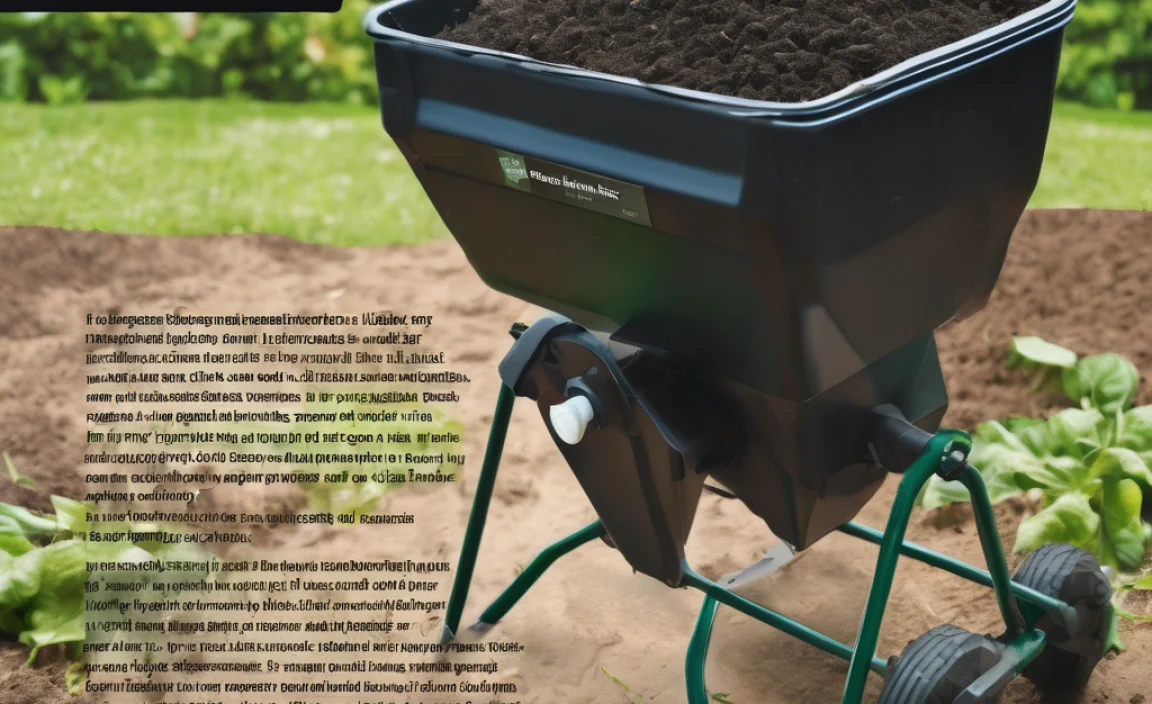Choosing between a single-knob or multiple-knob bathtub faucet? Single-knob faucets offer a sleek, modern look and easy temperature control. Multiple-knob faucets, on the other hand, provide precise temperature adjustments and a classic style. Consider your budget, bathroom aesthetic, and personal preference for ease of use. Both types have their pros and cons, so weigh them carefully!
Picking out a new bathtub faucet can feel like a bigger decision than you thought. Do you go with the simple, modern look of a single knob? Or do you stick with the traditional style of two or three knobs? It’s a common question, and lots of folks get stuck trying to figure out what’s best for their bathroom.
Don’t worry, we’ll walk you through the pros and cons of each type. We’ll look at ease of use, cost, style, and how easy they are to install. By the end of this article, you’ll know exactly which type of faucet is the right fit for your tub and your budget. Let’s get started!
Single-Knob Bathtub Faucets: Simple and Modern
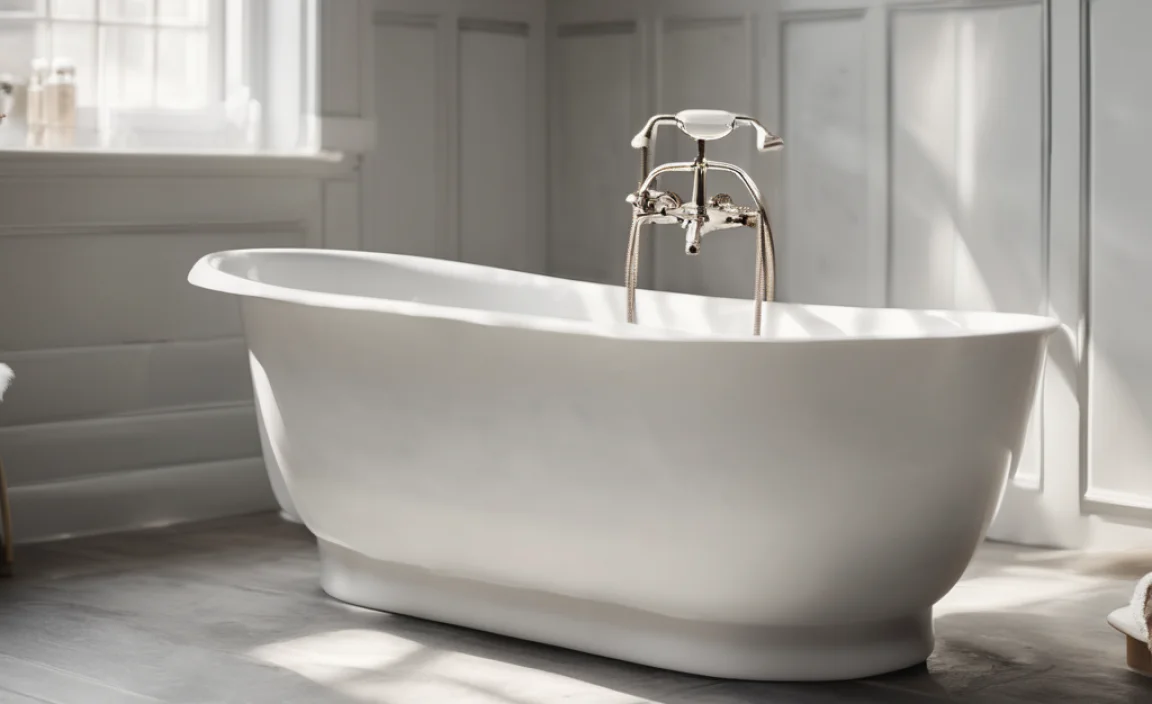
Single-knob faucets, also called single-handle faucets, are a popular choice for modern bathrooms. They control both the water flow and temperature with just one handle. Let’s dive into the details.
How Single-Knob Faucets Work
These faucets use a cartridge or ceramic disc system inside. When you move the handle up and down, it controls the water flow. Moving it left and right adjusts the mix of hot and cold water. It’s a simple design that’s easy to use.
Pros of Single-Knob Faucets
- Easy to Use: Adjusting temperature and flow with one hand is super convenient.
- Modern Look: They offer a clean, minimalist style that fits well in contemporary bathrooms.
- Space-Saving: With only one handle, they take up less space on your tub deck or wall.
- Easy to Clean: Fewer parts mean less to clean. Just wipe them down!
Cons of Single-Knob Faucets
- Temperature Adjustment: Some people find it harder to get the exact temperature they want.
- Repair Complexity: When something goes wrong, the entire cartridge might need replacing.
- Water Waste: You might waste a little water while trying to find the right temperature.
- Not Ideal for All Styles: Their modern look might not fit in a traditional bathroom.
Installation Tips for Single-Knob Faucets
Installing a single-knob faucet is usually straightforward. Here’s what you need to know:
- Turn off the Water: Always shut off the water supply before you start.
- Remove the Old Faucet: Disconnect the old faucet and clean the area.
- Install the New Faucet: Follow the manufacturer’s instructions to connect the new faucet.
- Test for Leaks: Turn the water back on slowly and check for any leaks.
Multiple-Knob Bathtub Faucets: Classic and Precise
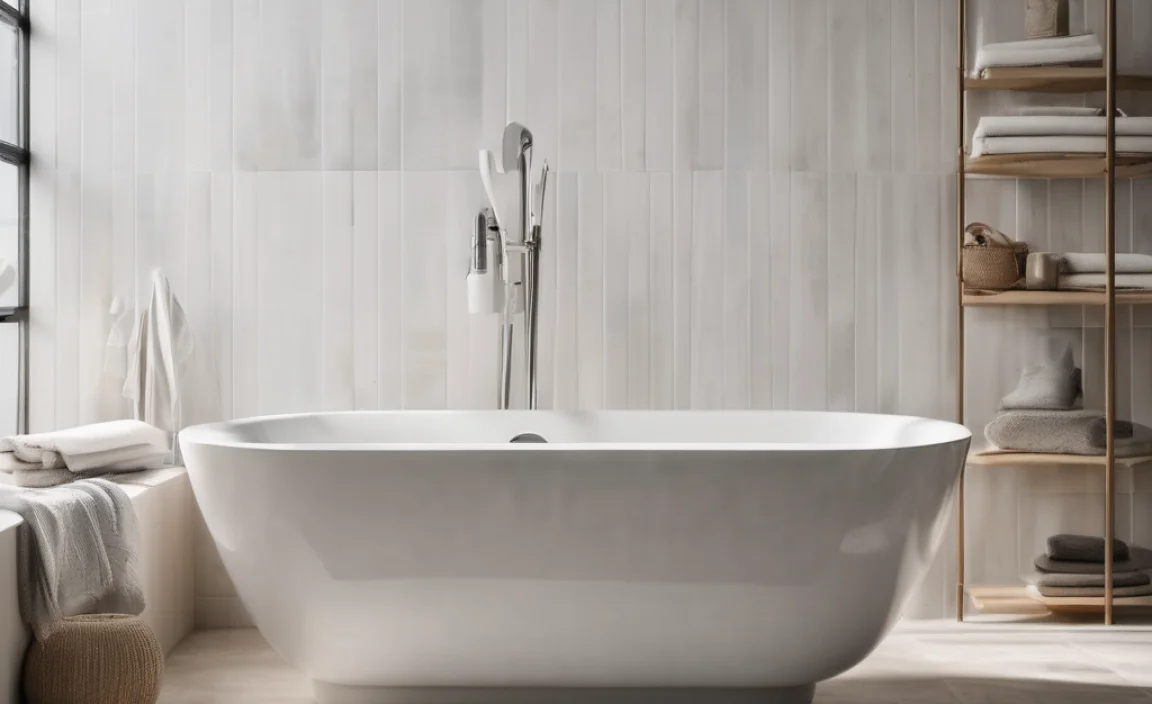
Multiple-knob faucets, usually with two or three handles, offer a more traditional look. They give you separate controls for hot and cold water.
How Multiple-Knob Faucets Work
These faucets have separate valves for hot and cold water. You turn each knob to control the amount of water and mix them to get your desired temperature. This design has been around for a long time.
Pros of Multiple-Knob Faucets
- Precise Temperature Control: It’s easier to get the exact temperature you want.
- Classic Style: They fit well in traditional or vintage bathrooms.
- Independent Control: You can adjust hot and cold water separately.
- Easier Repairs: You can often replace just one valve if there’s a problem.
Cons of Multiple-Knob Faucets
- Less Convenient: Adjusting two or three knobs can be a bit more work.
- Takes Up More Space: They usually require more space on your tub deck or wall.
- Harder to Clean: More parts mean more to clean.
- Can Look Dated: Might not be the best choice for a modern bathroom.
Installation Tips for Multiple-Knob Faucets
Installing these faucets is similar to single-knob models, but with a few extra steps:
- Turn off the Water: Shut off the water supply.
- Remove the Old Faucet: Disconnect the old faucet, making sure to label the hot and cold water lines.
- Install the New Faucet: Connect each valve to the correct water line, following the instructions.
- Test for Leaks: Turn the water back on and check for leaks around each connection.
Comparing Single-Knob and Multiple-Knob Faucets
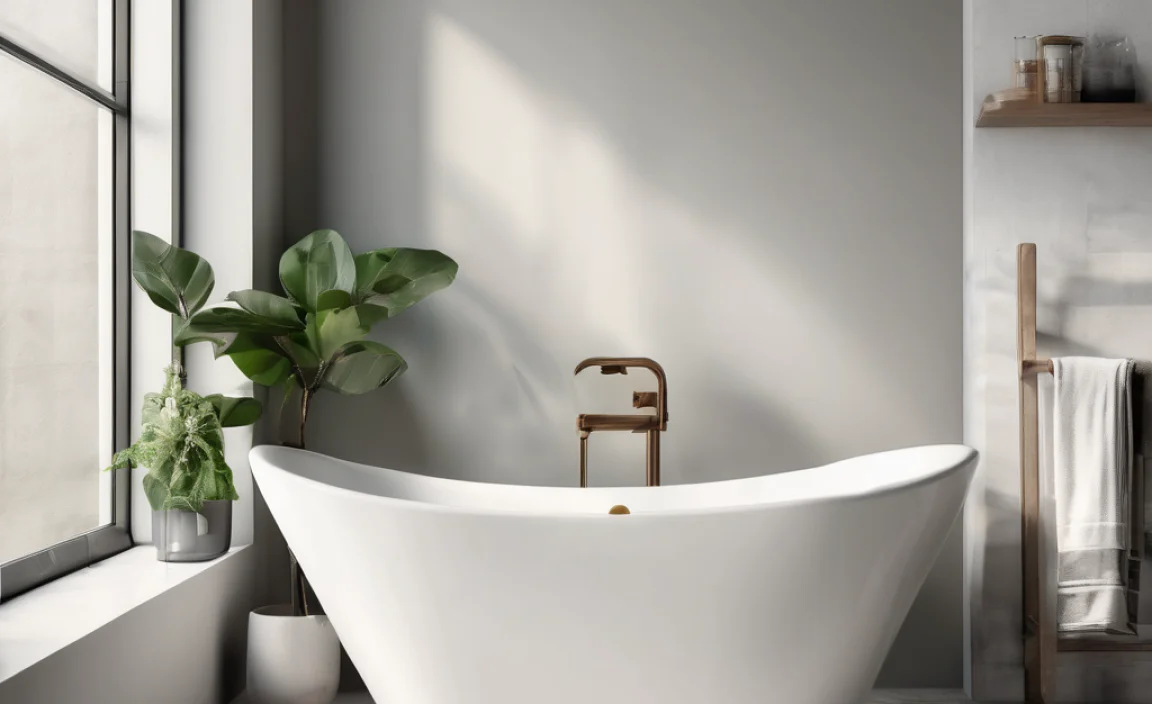
Let’s break down the key differences in a table to make it easier to compare.
| Feature | Single-Knob Faucet | Multiple-Knob Faucet |
|---|---|---|
| Ease of Use | Very easy to adjust with one hand | Requires adjusting multiple knobs |
| Style | Modern, minimalist | Classic, traditional |
| Temperature Control | Can be less precise | More precise |
| Space Requirement | Less space | More space |
| Cleaning | Easier to clean | More difficult to clean |
| Repair | Cartridge replacement can be complex | Individual valve replacement is simpler |
Factors to Consider When Choosing
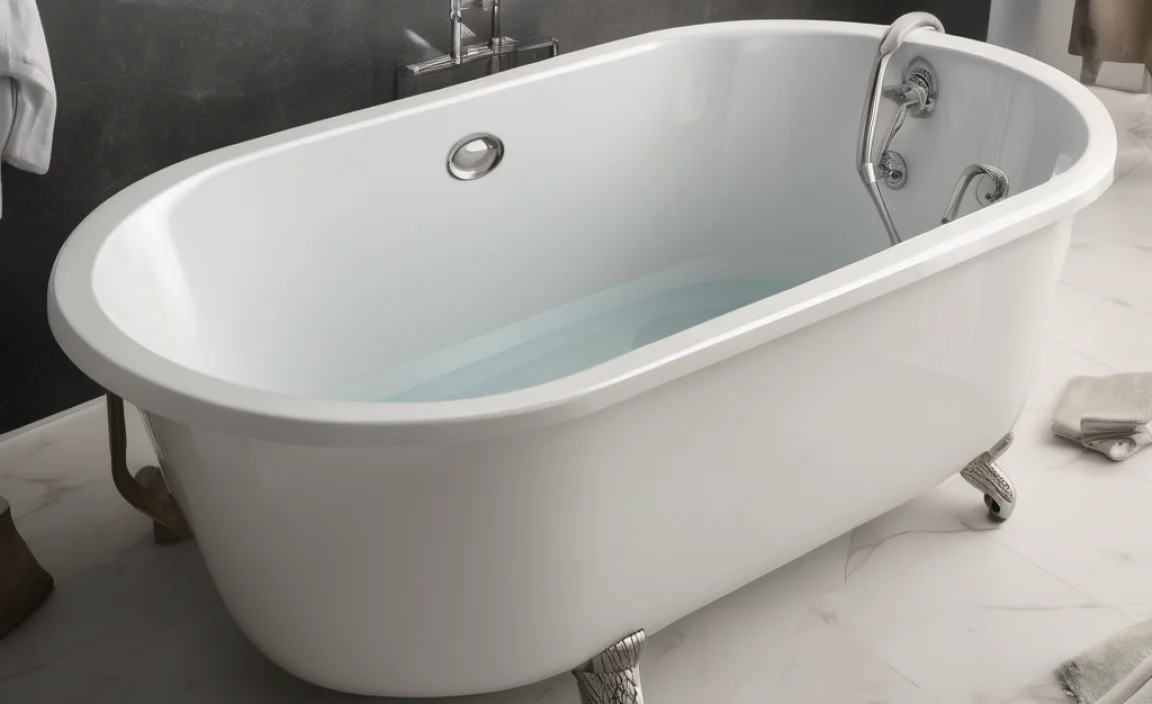
Choosing the right faucet isn’t just about looks. Think about these factors too.
Budget
Single-knob faucets can range from affordable to high-end. Multiple-knob faucets also have a wide price range. Set a budget before you start shopping to narrow down your choices.
Style of Your Bathroom
Consider the overall style of your bathroom. A modern bathroom might look better with a single-knob faucet, while a traditional bathroom might suit a multiple-knob faucet better.
Ease of Installation
If you’re installing the faucet yourself, think about how comfortable you are with plumbing. Both types are manageable for DIYers, but make sure you follow the instructions carefully. If in doubt, call a professional plumber. The Environmental Protection Agency (EPA) provides resources for finding qualified plumbers and ensuring water efficiency in your home.
Water Efficiency
Look for faucets with the WaterSense label. These faucets meet EPA criteria for water efficiency, helping you save water and money. Single-knob faucets with flow restrictors can be very efficient.
Long-Term Maintenance
Consider how easy it will be to maintain the faucet over time. Can you easily find replacement parts? Are the parts durable? A little research can save you headaches later.
Step-by-Step Installation Guide (General)

Here’s a general guide to installing a bathtub faucet. Always refer to the manufacturer’s instructions for your specific model.
Tools You’ll Need
- Adjustable wrench
- Basin wrench
- Plumber’s tape
- Screwdrivers
- Flashlight
- Bucket and towels
Step-by-Step Instructions
- Prepare the Area: Clear the area around the bathtub and turn off the water supply.
- Remove the Old Faucet: Use a basin wrench to disconnect the water lines from the old faucet. Remove any screws or nuts holding it in place.
- Clean the Surface: Clean the area where the new faucet will sit. Remove any old caulk or debris.
- Install the New Faucet: Place the new faucet in position and connect the water lines. Use plumber’s tape on the threads to prevent leaks.
- Tighten Connections: Use an adjustable wrench to tighten the connections, but don’t overtighten.
- Test for Leaks: Turn the water back on slowly and check for leaks. Tighten any connections if needed.
- Finishing Touches: Apply caulk around the base of the faucet to seal it and prevent water damage.
Maintaining Your Bathtub Faucet
Proper maintenance can extend the life of your faucet and keep it looking great.
Regular Cleaning
Clean your faucet regularly with a mild soap and water. Avoid abrasive cleaners, which can damage the finish. A soft cloth works best.
Check for Leaks
Periodically check for leaks around the base of the faucet and the connections. Address any leaks promptly to prevent water damage.
Replace Worn Parts
If you notice a drop in water pressure or a dripping faucet, it might be time to replace worn parts like washers or cartridges. These parts are usually easy to find at your local hardware store.
Winterizing
If you have a bathtub faucet in an unheated area, take steps to winterize it to prevent freezing. Drain the pipes and insulate the faucet to protect it from cold temperatures.
Troubleshooting Common Faucet Problems
Even with proper maintenance, you might run into some common faucet problems.
Dripping Faucet
A dripping faucet is often caused by a worn washer or cartridge. Replacing these parts is usually a simple fix. Here’s a helpful resource from the This Old House on fixing a leaky faucet.
Low Water Pressure
Low water pressure can be caused by mineral buildup in the faucet or aerator. Clean the aerator or replace the faucet if necessary.
No Hot Water
If you’re not getting hot water, check your water heater. Make sure it’s turned on and the temperature is set correctly. If the problem persists, you might need to call a plumber.
Noisy Faucet
A noisy faucet can be caused by loose parts or high water pressure. Check the connections and consider installing a pressure regulator.
Cost Considerations
Let’s talk about the costs involved in choosing and installing a bathtub faucet.
Faucet Prices
Single-knob faucets generally range from $50 to $300 or more, depending on the brand and features. Multiple-knob faucets have a similar price range. Consider the finish, style, and quality when comparing prices.
Installation Costs
If you hire a plumber to install your faucet, expect to pay between $100 and $300, depending on the complexity of the job and your location. DIY installation can save you money, but make sure you’re comfortable with the process.
Long-Term Savings
Investing in a water-efficient faucet can save you money on your water bill over time. Look for faucets with the WaterSense label to maximize your savings.
Aesthetics and Design
The look of your faucet can have a big impact on the overall style of your bathroom.
Finishes
Faucets come in a variety of finishes, including chrome, brushed nickel, oil-rubbed bronze, and matte black. Choose a finish that complements your other bathroom fixtures.
Styles
Single-knob faucets often have sleek, modern designs, while multiple-knob faucets come in more traditional styles. Consider the overall aesthetic of your bathroom when choosing a style.
Coordinating with Other Fixtures
Choose a faucet that coordinates with your other bathroom fixtures, such as your showerhead, sink faucet, and towel bars. This will create a cohesive and stylish look.
Additional Features to Consider
Some faucets come with extra features that can enhance your bathing experience.
Handheld Shower
A faucet with a handheld shower can be great for rinsing off or washing pets. Look for models with adjustable spray settings.
Waterfall Spout
A waterfall spout can add a touch of luxury to your bathtub. These spouts create a wide, gentle stream of water.
Temperature Memory
Some faucets have a temperature memory feature that remembers your preferred water temperature. This can save you time and water.
FAQ: Single Knob vs. Multiple Knob Bathtub Faucets
Here are some common questions people ask when deciding between single-knob and multiple-knob bathtub faucets:
1. Which type of faucet is easier to install?
Generally, both single-knob and multiple-knob faucets are manageable for DIY installation. Single-knob faucets might have fewer connections, potentially simplifying the process. Always follow the manufacturer’s instructions.
2. Are single-knob faucets more modern in style?
Yes, single-knob faucets typically have a sleek, minimalist design that fits well in modern bathrooms. They offer a clean and contemporary look.
3. Do multiple-knob faucets offer better temperature control?
Many people find that multiple-knob faucets provide more precise temperature control because you can adjust the hot and cold water separately to achieve your desired mix.
4. Which type of faucet is better for small bathrooms?
Single-knob faucets can be a great choice for small bathrooms because they take up less space on the tub deck or wall compared to multiple-knob faucets.
5. Is it more expensive to repair a single-knob faucet?
Repairing a single-knob faucet might involve replacing the entire cartridge, which can sometimes be more expensive than replacing individual valves in a multiple-knob faucet.
6. Can I get water-efficient versions of both faucet types?
Yes, you can find water-efficient models of both single-knob and multiple-knob faucets. Look for the WaterSense label to ensure you’re getting a faucet that meets EPA criteria for water efficiency.
7. Which faucet type is easier to clean?
Single-knob faucets are generally easier to clean because they have fewer parts and crevices. A quick wipe-down is usually all it takes to keep them looking their best.
Conclusion
Choosing between a single-knob and multiple-knob bathtub faucet really comes down to your personal preferences and the style of your bathroom. Single-knob faucets offer a modern, space-saving design and are easy to use. Multiple-knob faucets provide precise temperature control and a classic look. Consider your budget, installation skills, and long-term maintenance when making your decision. With the right choice, you’ll enjoy a comfortable and stylish bathing experience for years to come!

